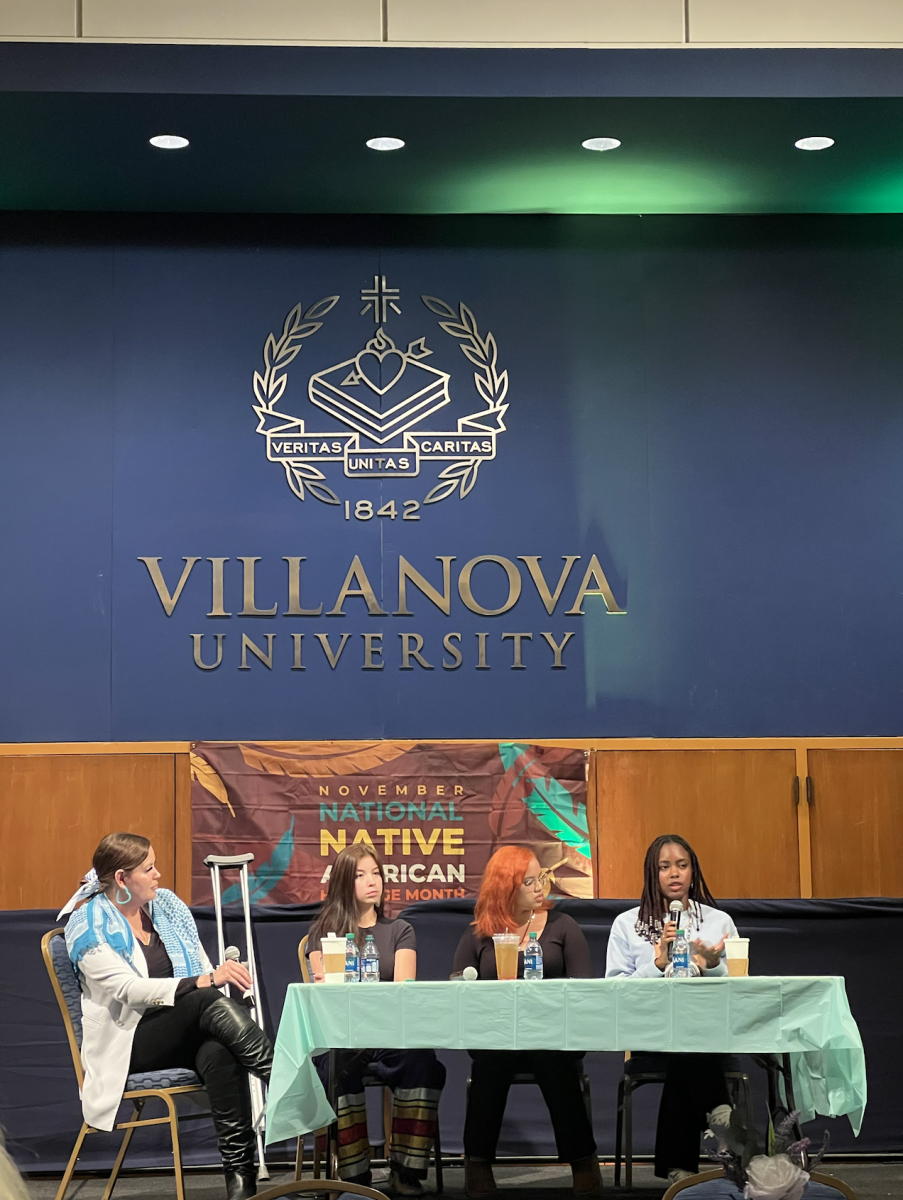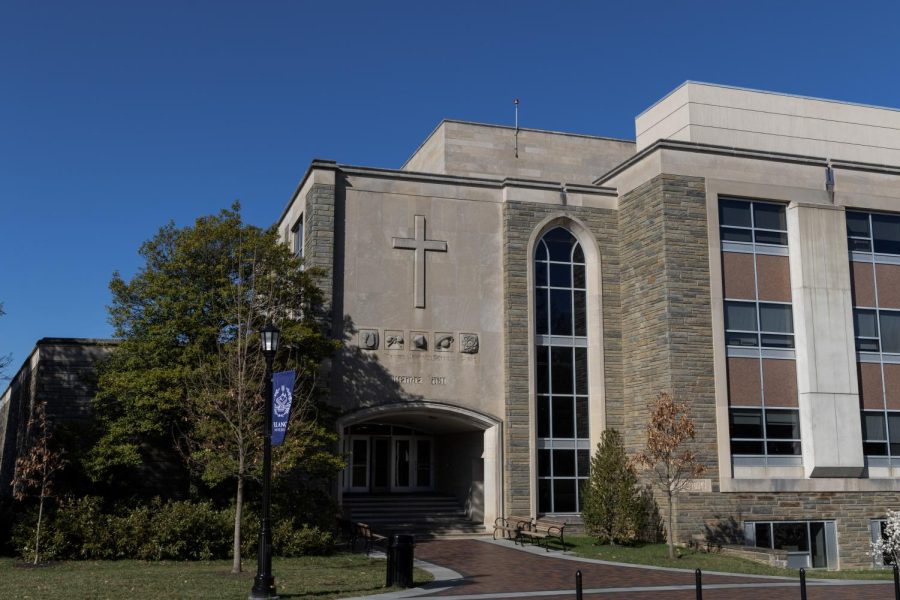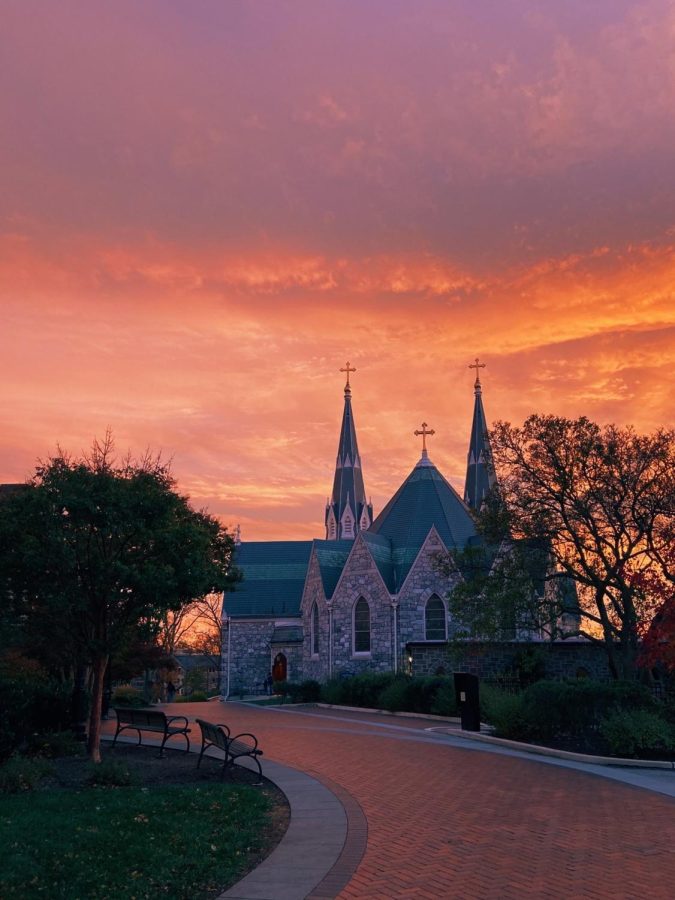Throughout the month of November, Villanova celebrated Native American Heritage Month. It was a time to recognize Villanova’s Native American and Indigenous students and alumni.
There were various informative and celebratory events held on Tuesday, Nov. 28. The Native American and Indigenous Heritage Month Symposium was held from 11 a.m. to 7 p.m. in the Villanova Room. This was an opportunity for all members of the Villanova community to hear from student and alumni speakers, witness demonstrations and eat cultural foods to learn about indigenous culture.
At 5 p.m. on the 28th, there was a student panel facilitated by Jules Jackson, a Villanova alum. The panel featured the three founders of the Native Indigenous Student Association (NISA): Meg Martin, Autumn Coard and Modonna Kongal. They discussed a multitude of issues, including each of their experiences being one of eight indigenous students at Villanova, embracing intersectionality and the importance of raising awareness about their culture.
“Our NAHM Symposium was a space for Villanova to acknowledge the presence of indigenous students on campus,” Kongol said. “The event was a beautiful way to showcase the diverse groups of Native and Indigenous students on campus and was crucial in paving a new understanding of Indigenous culture at Villanova. With N.I.S.A., we hope to provide students with a safe space to discuss the experience of Native and Indigenous Villanovans while actively celebrating and educating our peers.”
Coard was happy with what the symposium accomplished.
“The goal of the symposium was to celebrate Indigenous and Native American history month with the Villanova community and amplify Native voices,” Coard said. “I think the symposium went great and it’s only a start to highlighting what Indigenous people on other campuses, and our own have been trying to establish for quite some time now. … NISA aims to improve the experience of Indigenous and Native students by honoring, educating, and celebrating the diverse experiences, culture and traditions of Indigenous people.”
During her time at Villanova University as a student, Jackson shared that she was the only Native American and Indigenous student. Although she reminisced about feelings of isolation during her time at Villanova, she courageously started the Native American Students Association (NASA). Jackson talked about how fortunate the student panelists are for having other students of the Native American and Indigenous communities to bond with. However, Jackson and the student panelists agreed that more work needs to be done to advocate for the inclusion of Native American and Indigenous students at Villanova on campus. They acknowledged that an important component to achieving this goal is recruiting and accepting more Native American and Indigenous students.
The student panel portion of the symposium was well attended by Villanova students from all classes, faculty members and administrators. Members of the Native American and Indigenous Heritage outside of Villanova were also in attendance. At the front of the Villanova Room, a wide range of artwork created by people of different Native American and Indigenous tribes was featured.
At the end of the student panel discussion, student attendees were given the opportunity to ask the student panelists questions about their experiences, upbringing, and advocacy at Villanova. They responded by talking about their different tribes and provided additional information about NISA.
Overall, the events and panel discussion generated important dialogue about members of the Villanova University community who are of Native American and Indigenous Heritage. Moving forward, Jackson and the student panelists are eager to continue representing the Native American and Indigenous Heritage on and off Villanova’s campus. They are optimistic that they will make positive strides to help the university community be more well-informed about their heritage.





